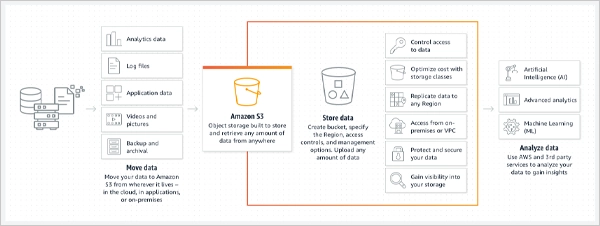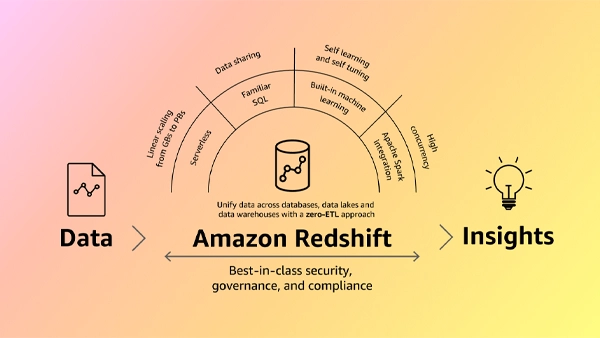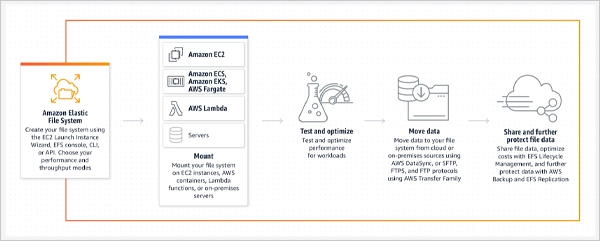Tableau on AWS: Optimizing Your Analytics Infrastructure for Better Insights
Tableau, a popular tool for data visualization, allows users to create interactive dashboards and reports. But for that, you require a strong analytics infrastructure that can manage everything.
Amazon Web Services, or AWS, is a perfect cloud computing platform that enhances your overall performance on Tableau. It features multiple tools and functions on a metered, pay-for-use billing model.
Read this article to learn more about the services offered by this Node.js serverless computing platform and utilize Tableau on AWS in the best possible manner.
Choose the Right EC2 Instance
Amazon Elastic Computer Cloud (EC2) is a virtual server in the cloud that offers resizable computer power. When running on AWS, you can choose the suitable EC2 instance that is essential for the quantity and complexity of your data.
AWS provides you with different specifications and shapes of EC2 instances. Some of them include CPU, memory, storage, and network speed.
The process to launch this service is simple, just follow the below steps:
- Launch Amazon EC2 on your PC.
- Select a template with the required configurations.
- Choose the instance type and hardware specifications.
- Specify the security settings of the instance, and you’re done.
For example, an EC2 instance with more CPU cores and memory will be better suited for tasks working on a lot of data. You can ensure that Tableau has enough computing power to handle massive data sets and complex calculations by selecting the appropriate instance.
Implement Auto Scaling
The auto-scaling functionality acts as a buffer up to EC2 by managing multiple instances at once. It enables you to automatically alter your computing resources following the demands of your applications.
Through this service, you can set a minimum capacity of instances to continuously run as default. The rest of the instances will only run when necessary or given the instructions.
For instance, you may automatically scale up your EC2 instances during peak hours and scale them down during off-peak hours to save money. Plus, your Tableau workloads will always be accessible even during unanticipated traffic spikes.
Use Amazon S3 for Data Storage
Amazon S3, or Simple Storage Service, a scalable object storage service, lets you store and access data online. Using Amazon S3 helps in the effective and efficient management of massive amounts of data.

It is inexpensive, secure, and completes all the tasks with quality performance. What’s best is that you can integrate S3 with Tableau or any other computing platform. Thanks to this feature, you will have instant access to your data instead of laborious data warehousing.
S3 Intelligent Tiering optimizes storage costs by automatically transferring your data between four access tiers, every time your access patterns change. The four access tiers include two tiers optimized for frequent and infrequent access. Whereas the other two opt-in archive access tiers are designed for rarely accessed data.
Note
In S3, tiers are the different sections designed to store data retrieved at different frequency rates.
With the free tier plan, you can easily store 5 GB of data for a total of 12 months. After that, you can always purchase storage as per your needs. To calculate your budget, you can use the AWS pricing calculator.
Utilize Amazon Redshift for Data Warehousing
Amazon Redshift, another data warehouse service of AWS, helps you store and analyze massive data sets. Optimizing the performance becomes effortless as you can offload data processing on a petabyte scale.

Powered by SQL, it comes in handy when the data patterns are too complex for a basic RDBMS (Relational Database Management System) software. With the no-code/low-code zero-ETL approach, you can effortlessly access or extract data across all of your databases.
Additionally, you get the option to scale your data lower or higher without worrying about the processing power. Plus, Amazon Redshift is completely compatible with Tableau and other such software.
Use Amazon Elastic File System for Shared File Storage
With the help of EFS or Amazon Elastic File System, a scalable and fully managed file storage service, you can share file systems across several instances. It is an ideal platform if multiple activities need to access the same data at the same time.

Since it is an economical option, you can effortlessly remove any other complicated file-sharing systems like NFS (Network File System).
EFS will help you create and configure shared file systems simply and quickly. Moreover, it doesn’t require any provisioning or regular maintenance, as the size automatically grows and shrinks while you work.
Summing Up
AWS is a great web solution that provides on-demand web services to individuals. And, that too, on a pay-as-you-go basis that saves you unnecessary expenses.
In conclusion, utilizing AWS’s capabilities can significantly improve Tableau’s performance and effectiveness. By adhering to the abovementioned best practices, you may build a strong and scalable analytics infrastructure to acquire deeper insights into your data.
FAQs
Ans: Yes, AWS is fully compatible with Tableau and other data analytics platforms. Not only that, but it also boosts the overall performance of your activities to generate quality output.
Ans: Tableau data can be easily accessed and extracted with the Amazon S3 connector. Plus, the data is properly organized in different tiers based on your access patterns.
Ans: Yes, it is considered a better platform than Tableau because of its much less setup time and improved visualization. However, Tableau is much more powerful when it comes to handling complex data sets.
Sources
